Tudor released the FXD Marine Nationale in November of 2021 after months of anticipation after announcing a partnership with the French Navy, aka the Marine Nationale. It would have been easy to release another vintage-inspired Black Bay variant to celebrate, but instead, Tudor built a modern watch within the Pelagos range, intended for use by a specific subset of Navy divers. Rather than looking back, Tudor shifted their view forward, and the Pelagos collection was the perfect vessel for such a move. The FXD has since gained a black/black variation meant to recall the brand’s connection to the UDT divers that paved the way for what we now know as Navy SEALS. The result is watches that feel like a continuation of the brand’s goals to build field ready tools, rather than a mere celebration of their history.
In hindsight, the release of the FXD feels all the more unusual. Not necessarily because of Tudor’s efforts to reconnect with outfits like the Marine Nationale and the U.S. Navy (the cynic in me will point out that such relationships are almost always mere licensing agreements) and in the process bring more of their history to light; but also because of the manner in which they went about doing it. A more direct way to reference the history, a throwback style approach would have likely driven the point home, but instead, Tudor went ahead with a more practical approach that would be ready to fill a functional role in the same manner that the 7922 or 9401 references were from the late ‘50s to the ‘80s.
It’s been nearly three years since the release of the FXD MN, and it’s a watch that’s found comfort in its place just off of the beaten path. The fixed lug design remains just as compelling today as it was then, and just as unique. It’s also the focal point of its polarizing nature. This isn’t a small watch, and it eschews many of the trends we’ve embraced in recent dive watch releases, but it walks a fine line in bringing all of its robust features and personality together in a manner that feels pragmatic and ultimately usable.
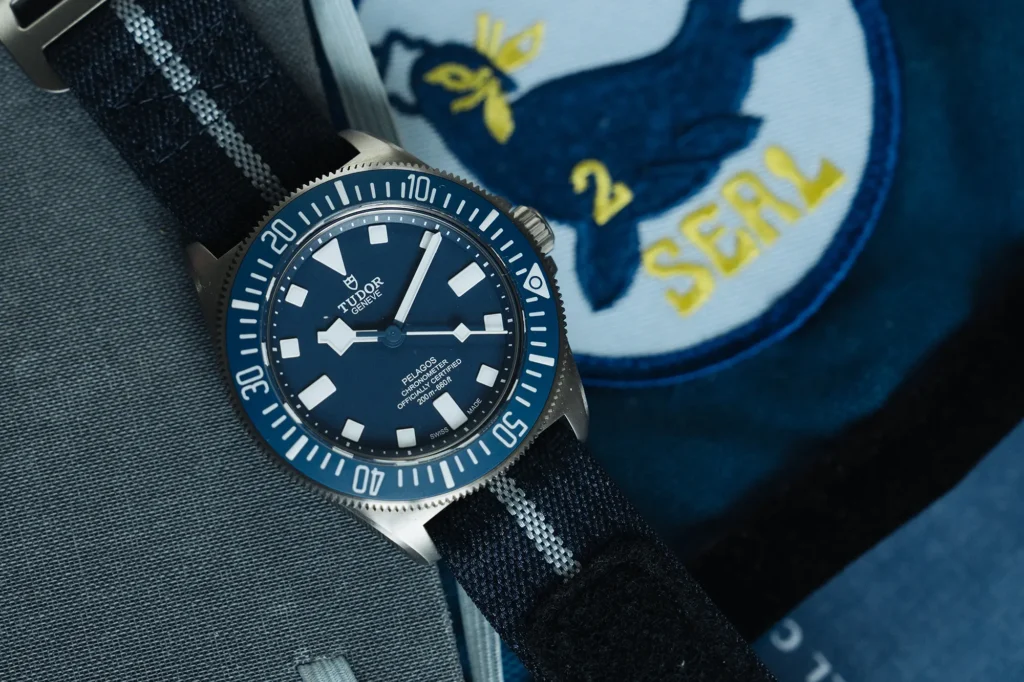
I can attest to the effectiveness of the FXD’s design ethos in use, as one has accompanied me on every dive I’ve made since getting open water certified last year. This watch offers an exceptional level of visibility thanks to its high-contrast dial, and an unobtrusive presence thanks to its trim(ish) measurements, meaning it’s an easy watch to use that doesn’t get in the way of anything critical. That said, the diving world is still new to me, and that journey will bear out over a longer period of time. But it’s worth noting that it’s been a downright inspiring companion over the years, urging me to get out and put it to good use (if a watch can do such a thing).
One of the biggest drawbacks to the FXD is also its most defining feature, the fixed lug design that is integrated to the titanium case. This means that only passthrough straps can be used, eliminating a potential failure point of a springbar. Now, I’d have no hesitation in using any of the other Pelagos references fitted with bracelets for anything rugged, but the philosophy of keeping the midcase a single component feels refreshing and different while also offering a viable engineering focus around the idea of a fixed lug.
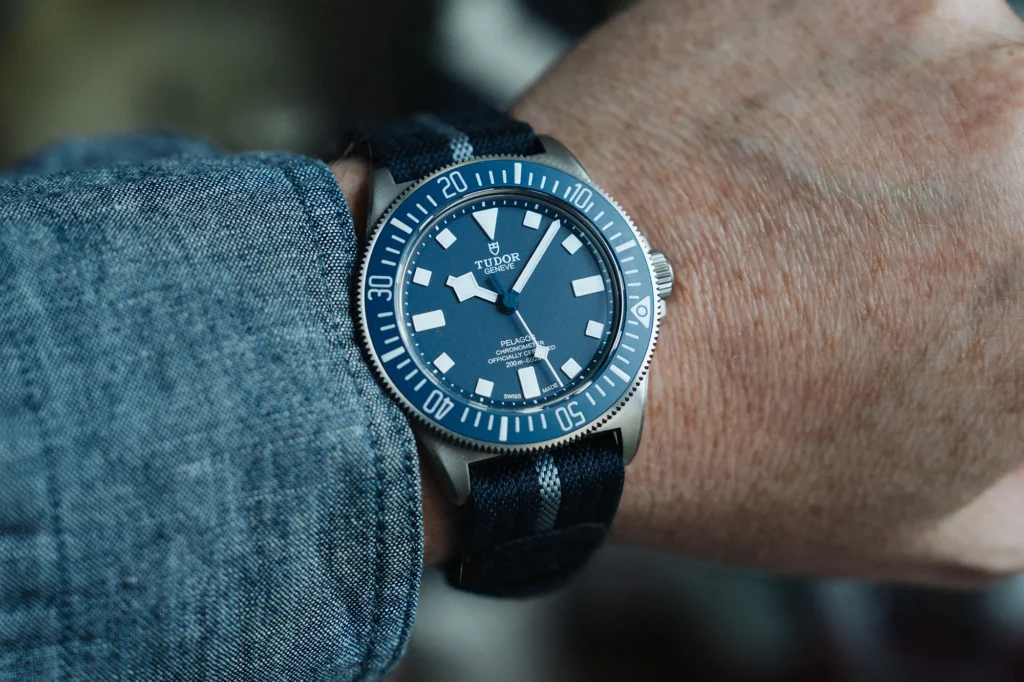
So how does this affect everyday wear? In truth, not all that much. Of course, if you’re hoping to have a single dive watch in your collection, and the FXD is on the list, this feature will limit you to a single style of strap, meaning it may not be as versatile as other options, but at the same time, this watch was never really about being ‘diverse’ in nature. Its focus is clear and singular, and it happens to make for a great all around tool watch as a result, but it’s still not going to pair with anything remotely formal and it makes no apologies for that.
The other perceived drawback of the fixed lug design is the listed lug to lug length of 51.5mm. The measurement is taken from the center of the bar, which bows outward in shape. If taken from the tip of the lug where you’d normally take the measurement, that number comes down to a more reasonable 48.8mm. This isn’t a small watch, at 42mm in diameter (43 if measured from the edge of the bezel assembly) and just under 13mm in thickness, but it falls into a strangely wearable territory, as the case sits very flat to the wrist, and the curved lug bar keeps things secure. It’s well distributed, and frankly much easier to wear than you might imagine. I felt surprised by this quality the first time I strapped this watch on, and I remain impressed by it years later.
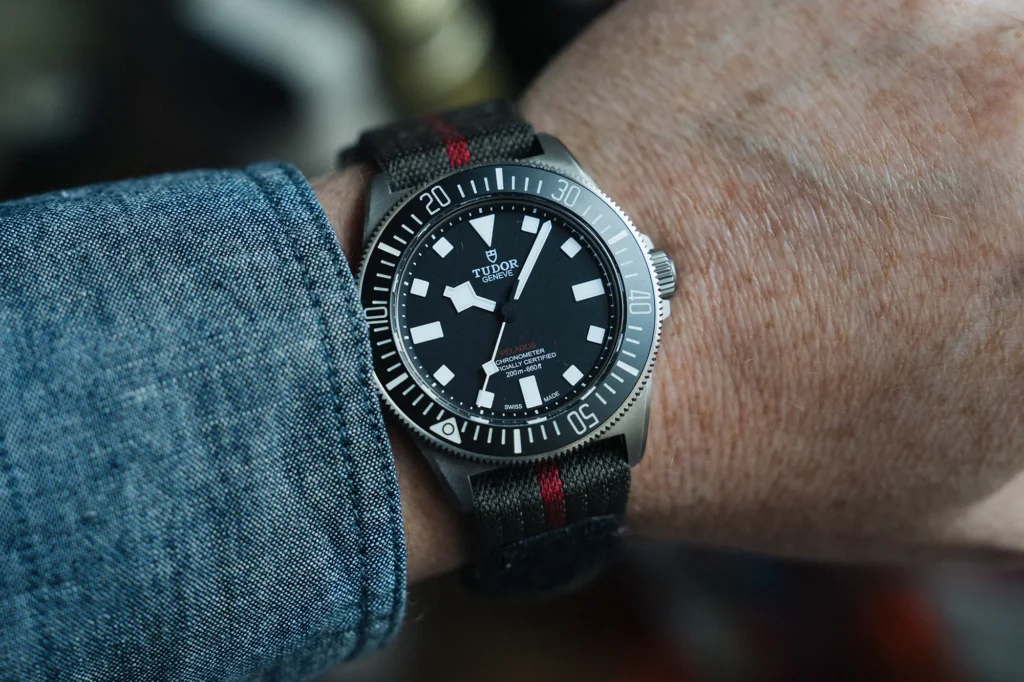
I’d go so far as to say that the way it wears is one of its defining features, and is likely the reason that people find themselves strangely drawn to the watch when experiencing it in person. In fact, there’s a strange appeal about this watch as a whole that is difficult to articulate, but that most folks immediately understand when interacting with it. In the years since release, I chalk it up to the uniqueness of its architecture, the fully indexed bezel (one of which is bidirectional, and counts down), and its measurements that seem to defy the status quo. All of this comes together in a way that just feels different than almost every other diver out there.
We have seen so many incredible dive watches released in the years since the FXD was launched, including some rather unique takes on the genre, but none have really come close to replicating what Tudor has done with the FXD. There has been no influx of fixed lug design cases, and that’s a bit of a shame if you ask me. Taking this route can really create some interesting design possibilities, as we’ve seen with the FXD, and Omega has come close with their Planet Ocean 6000M Ultra Deep, but that watch remains an outlier as it’s more of an engineering flex than anything else, and at 18mm thick, it’s not exactly an approachable watch. But its midcase design is totally unique, and I’d love to see them bring a similar approach to the regular PO, or even the Seamaster 300 range in some form.
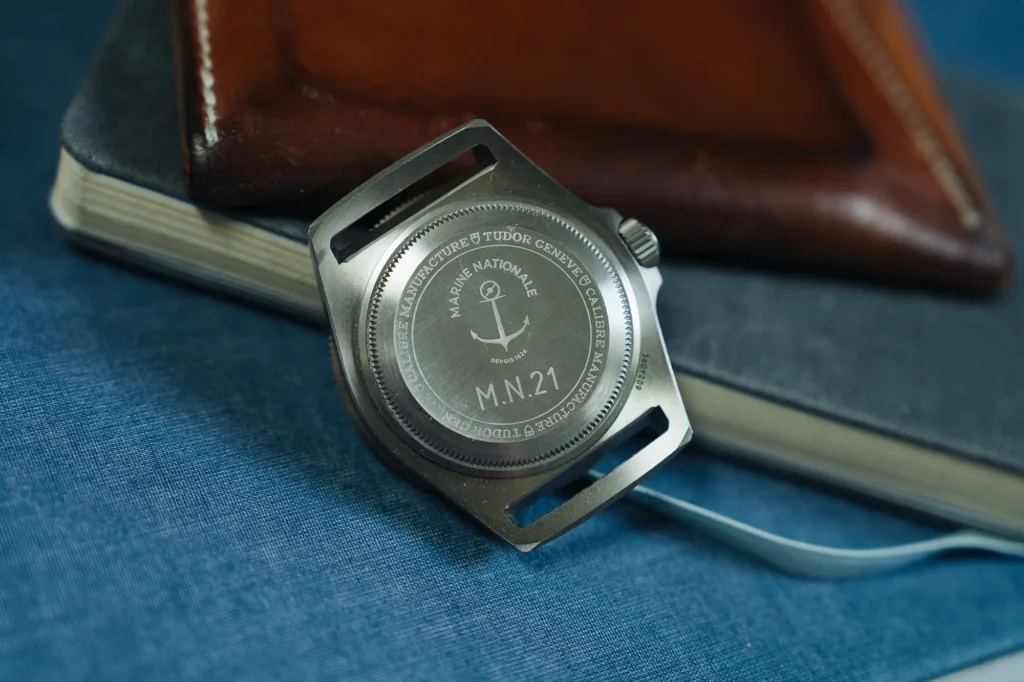
Marathon, Autodromo, Bertucci, and CWC have all made some form of a fixed lug watch, but they don’t quite hit the same notes due to their use of a regular bar that’s been fixed into position. The Autodromo comes the closest of this bunch, but the original Group B was far from a dive watch. Point being, the shape and architecture of the case remains largely unchanged. I had hoped that the FXD might usher in a small trend of more interesting cases utilizing a fixed lug design, but that hasn’t really been the case.
Taking a step back, the FXD has found a diehard group of enthusiasts that have embraced it, and there is one other element to its lore that’s still playing out. The FXD MN utilizes a numbers caseback, just like old-school MN watches, listing the year in which it was produced. This is a watch that hasn’t been as widely available as we might like (likely due to its very niche status), and the ‘21 caseback of the original (which was on sale for less than 2 months) certainly contributed to a FOMO around the watch on launch. That said, none of the owners of this watch that I’ve encountered seem to care much about the collectibility aspect of this watch. They are all put to use and often used as intended.
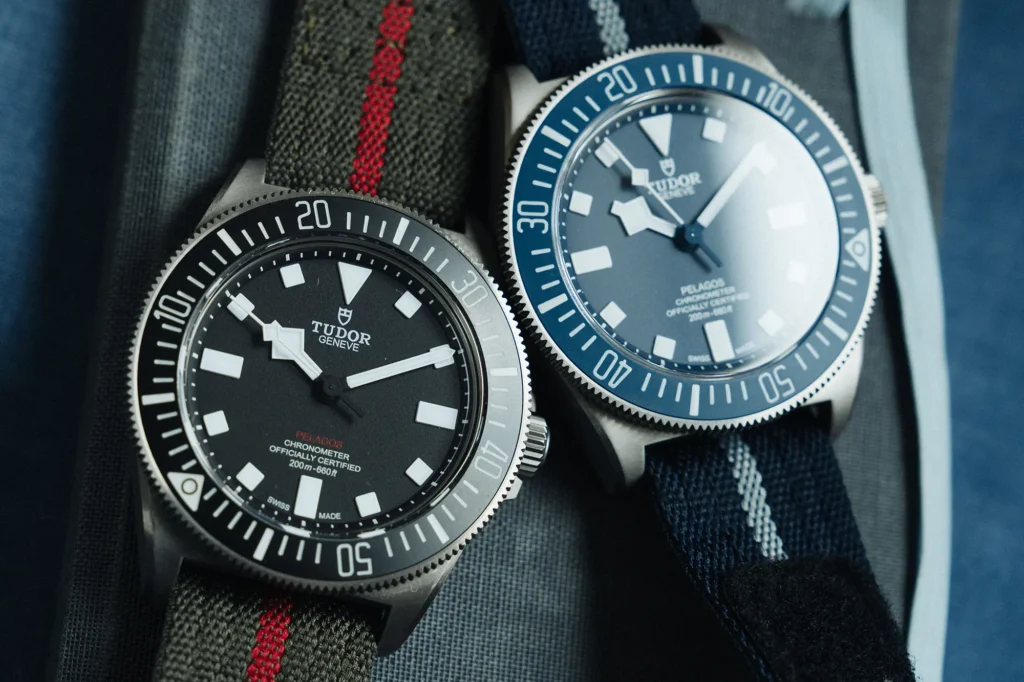
In the long term, that fact is precisely why I feel that the FXD will remain a very interesting watch decades down the line. Not for its rarity or odd features, but for how it’s used in the community. I can tell you first hand that these watches are gathering some serious stories under their belts (or emblazoned on their casebacks) and this is the healthy foundation of longevity that will keep these watches interesting in the eyes of generations to come. Thankfully, the more easily quantifiable features of the watch make it interesting regardless of what it’s used for.
The FXD has only gotten better with age, and I suspect that its story is only just beginning. But where do Tudor take the watch from here? Do their team sponsorship limited editions point the direction? Perhaps, but until then, the time only references will suit me just fine.

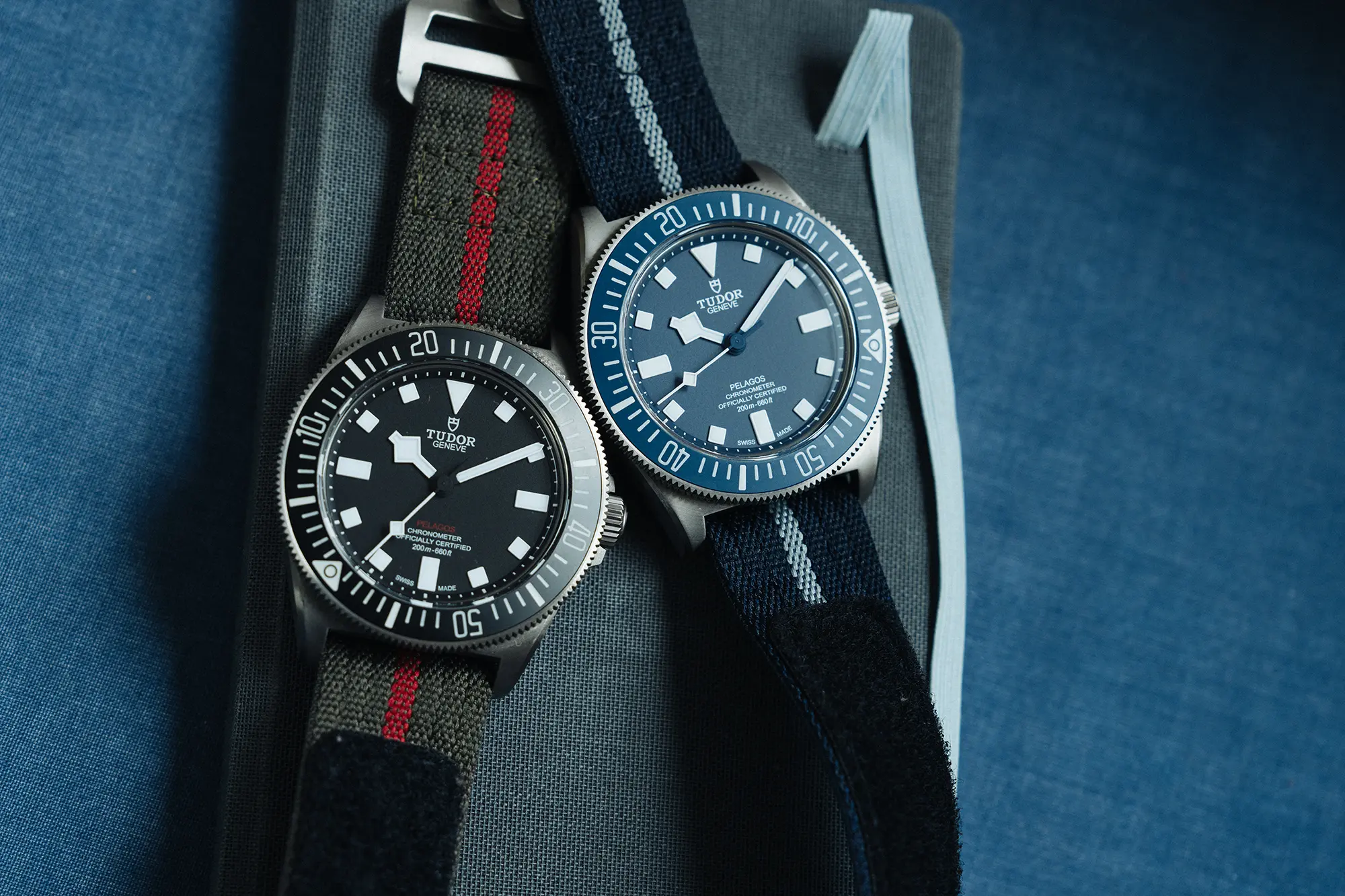
Comments
One response to “Video: (Almost) Three Years Later with the Tudor FXD”
[…] Tudor FXD […]